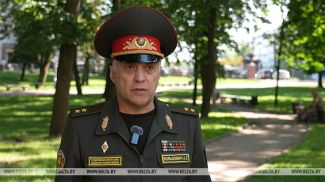MINSK, 9 April (BelTA) – The National Academy of Sciences of Belarus will initiate the further extension of the service life of BKA, the Belarusian satellite for the remote sensing of Earth. Chairman of the Presidium of the National Academy of Sciences of Belarus Vladimir Gusakov made the statement during a press conference held on 9 April to discuss the state and prospects of Belarusian-Russian cooperation in space industry, BelTA has learned. The press conference was held in the run-up to the 60th anniversary of the first manned space flight.
The BKA satellite was created thanks to R&D efforts of Belarus and Russia. It was successfully inserted into orbit in July 2012. Together with the Russian satellite Canopus-V it comprises the Belarusian-Russian satellite constellation for the remote sensing of Earth. Thanks to efforts of Belarusian and Russian specialists to maintain the satellite and improve its performance the BKA's service life has been extended till the end of 2021, the official said.
The BKA was launched in 2012 and was expected to stay in orbit for five years similarly to other satellites of its kind. The Belarusian satellite has worked for nine years in outer space. It is equal to launching a new satellite. “In other words, we've saved the cost of another satellite. Specialists of the National Academy of Sciences of Belarus and Russian colleagues are now evaluating the technical state of the satellite in order to possibly extend its service life further,” Vladimir Gusakov said. “As of today one can predict that the Academy of Sciences will bring the matter of further expansion of the BKA's orbit life before the head of state,” the official noted.
In his words, the data sent by the BKA and the Belarusian-Russian satellite constellation is used to ensure the defensive capacity and national security, monitor emergencies, study the state and forecast the development of natural terrains, agriculture, maintain the state land registry, design, reconstruct, and build roads. Space images represent the foundation for creating topographic maps and navigation maps. They are widely used for geological exploration and as part of aerospace education.













